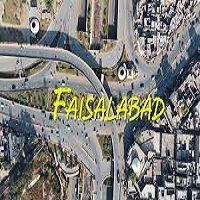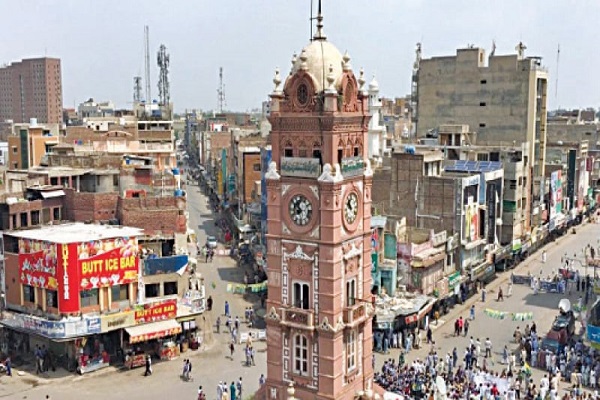Faisalabad is a district of the province of Punjab in Pakistan which has a total population of 3 million inhabitants. It was previously called Lyallpur and is the third populated city in the country. The total area of the district is 22.6 square miles (58.5 kilometers). It is bordered by the districts of Jhang, Hafizabad, and Toba Tek Singh.
Furthermore, the district has fertile land and produces a number of crops that are irrigated through the canals excavated from River Chenab. In addition to that, it has a total of six tehsils which are famous for its agricultural productions.
Moreover, the city is famous for its textile and contains a number of educational institution which provide primary, middle, secondary and higher education facilities to the people of the region. The article summarizes all the information about this city, including Faisalabad History.
| Title | Description |
|---|---|
| Information | |
| Location: | Pakistan |
| City Council: | Municipal Corporation |
| Type: | Municipal Corporation |
| Former name: | Lyallpur |
| Local Language Name: | 98.2% Punjabi; 1.8% Others |
| Coordinates : | 31°25’45 |
| District: | Faisalabad District |
| Region: | Punjab |
| First settled: | 1892 |
| Founded by: | Sir Charles James Lyall |
| Website: | www.faisalabad.gov.pk |
| Language | |
| Official Language: | Urdu |
| Native Language: | Punjabi |
| Other Languages: | Urdu, Punjabi, English |
| Government | |
| Government Type: | Municipal Corporation |
| Mayor: | TBD |
| Deputy Mayor: | TBD |
| Area | |
| Land: | 840 km2 (325 sq mi) |
| Water: | 430 km2 (165 sq mi) |
| Metro: | 5,860 km2 (2,261 sq mi) |
| Population | |
| Rank: | 3rd, Pakistan |
| Density: | 3,200/km2 (8,300/sq mi) |
| Time zone | |
| Time zone: | Pakistan (PST) (UTC+5) |
| Summer (DST): | PST (UTC+4) |
| Codes | |
| Postal code: | 3800 |
| Dialing code: | 041 |
| Vehicle registration: | Three letters beginning with F and random four numbers (e.g., FDA 1234) |
Table of Contents
Faisalabad History
The region was established by the British Rulers in 1892 during colonizing the valley of Chenab. The district was named after James Lyall, who played a big role in its establishment.
In 1977, the name was changed by the government of Pakistan to Faisalabad in honor of Saudi Arabian King Faisal. It means the city of Faisal. Furthermore, it is also stated that the people of Sandalbar, Toba Tek Singh, Jhang, Shahdara, and many other regions used to live here in the 1600 century.
A canal was built on the river of Chenab, which flows through the district by the British government which provides water to the agricultural regions of the region. Other projects were carried out by the government of British from 1860 to 1904, which include a railway link between Faisalabad and Wazirabad.
Area
According to the 1998 census of Pakistan, the district had a total area of 5856 square kilometers (2261 square miles).
Population
According to the 2017 census of Pakistan, the district had a population of 7874810 inhabitants.
Religion
Islam is the most followed religion of Faisalabad, followed by 97 percent of the population, while the remaining 3 percent of the people are followers of Christianity and Hinduism.
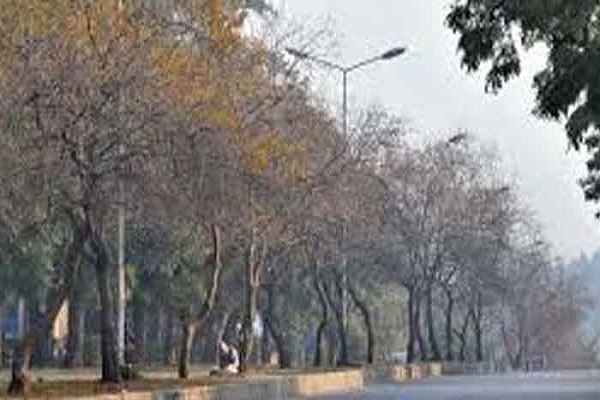
Language
Punjabi is the most widely spoken language of the region, spoken by a total of 98 percent of the population while 2 percent use to speak Punjabi and other Languages.
Administration
The district is administratively subdivided into six tehsils which are given below.
- Faisalabad City
- Samudri
- Chak Jhumra
- Faisalabad Saddar
- Tandlianwala
- Jaranwala
Faisalabad Weather
The climate of the district remains hot in summer and cool in the winter season. The average temperature of the summer season is 34 degrees centigrade, while the highest recorded temperature of the region is 48 degrees centigrade.
Furthermore, the average temperature of the district in the winter season is 5 – 9, while the lowest recorded temperature is -4 degrees centigrade. The average rainfall of the region is 615 mm.
Transportation
There are a number of roads, railway lines, and an airport that facilitate the people of the region during their traveling to national and international destinations.
Roads
Grand Trunk Road (GT Road) is one of the earliest roads that pass through the region and provides travel services. The Motorways, as well as GT Road, connects the region with nearest neighboring countries and local destinations. Furthermore, M– 4 Motorway connects the district with Multan. All of the roads in the region are constructed under Faisalabad Development Authority (FDA).
Railway
Faisalabad Railway Station is one of the main railway stations which connect the region with Wazirabad, Khanewal, Multan, Karachi, and Lahore.
Airport
Faisalabad International Airport is the central airport that facilitates the people and connects the region with local and international destinations, including Saudi Arabia, Oman, China, UAE, Qatar, Iran, Turkey, United Kingdom, and Azerbaijan. The airport has the capacity to handle the landing of wide-body crafts, including the Boeing 777.
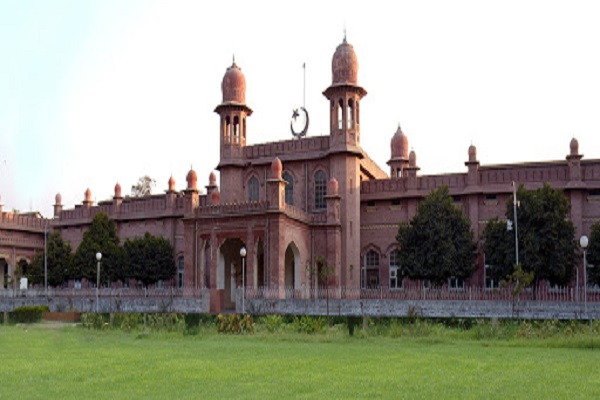
Education
Faisalabad has a number of institutions which provide education facility to the people of the district. The literacy rate of this city was recorded as 46 % in 2013. Some of the major institutions of the region are given below.
- University of Agriculture
- National Textile University
- University of Faisalabad
- Government College University
- University of Engineering and Technology
- Nuclear Institute for Agriculture and Biology
Agriculture
Faisalabad has agricultural land and produces crops including sugarcane, wheat, rice, maize, mangoes, and many others. The major Vegetables of the region are as follows.
Vegetables
Major vegetables grown in the region are given below:
- Chili
- Ginger
- Garlic
- Onion
- Coriander
- Tomato
- Sugar Beet
Fruits
A number of varieties of fruits are grown in the region, among which some are as follows:
- Apple
- Banana
- Citrus
- Peach
- Apricot
- Grapes
- Pomegranate
- Mango
- Guava
- Plums
- Pear
Industries
Faisalabad is called the Manchester of Asia due to its industrial development after the independence of Pakistan in 1947. A total of five industrial units existed here before independence which includes 328 textile mills, 92 chemical industries, 12000 household industries, 512 large industrial units, 02 Engineering Units, and a total of sixty thousand loom industries.
Currently, there are a number of large and small industries supported by the local banks of Pakistan, which include the following.
- Flour Mills
- Textile Mills
- Agro Support Industries
- Handicraft Industries
- Export Oriented Industries
- Service Industries
- Import Substitution Industries
- Food Processing Industries
Sports
A number of games are played by the people of the region, including Volleyball, Basketball, Badminton, and table tennis, but cricket is the widely played game of the district.
There is a cricket ground constructed here under the name of Iqbal Stadium, which is named after the national poet of Pakistan, Allama Mohammad Iqbal. The local team of Faisalabad is named Faisalabad Wolves, which participates in the PSL (Pakistan Super League) every year. Furthermore, there is a hockey stadium which is named Faisalabad Hockey Stadium.
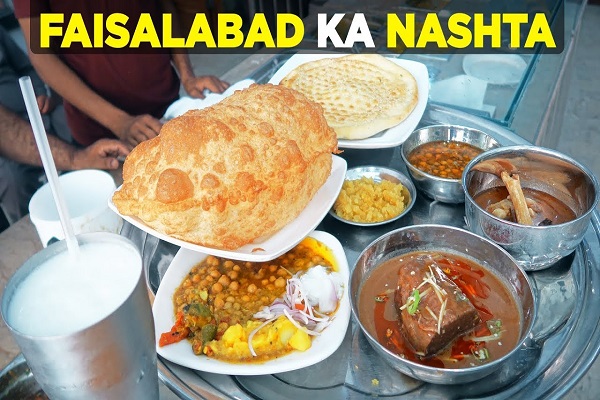
Tourism
There are many tourist attraction sites in this city which include the following:
- Clock Tower
- Jinnah Garden
- Lyallpur Museum
- Gumti Fountain
- Aqua Land
- D – Ground Park
- Qaiseri Gate
- Sindbad Wonderland
- Charles James Monument
Notable People
Some of the notable people of the region are as follows:
- Barkat Ali Ludhianwi
- Naqs Lyallpuri
- Arfa Karim
- Fateh Ali Khan
- Nusrat Fateh Ali Khan
- Rahat Fateh Ali Khan
- Iqrar Ahmad Khan
- Khalid Maqbool
- Ifti Naseem
Faisalabad Zip Code
38000 is the zip code of this city.
Social Media Handle
https://www.facebook.com/fsd4u/
